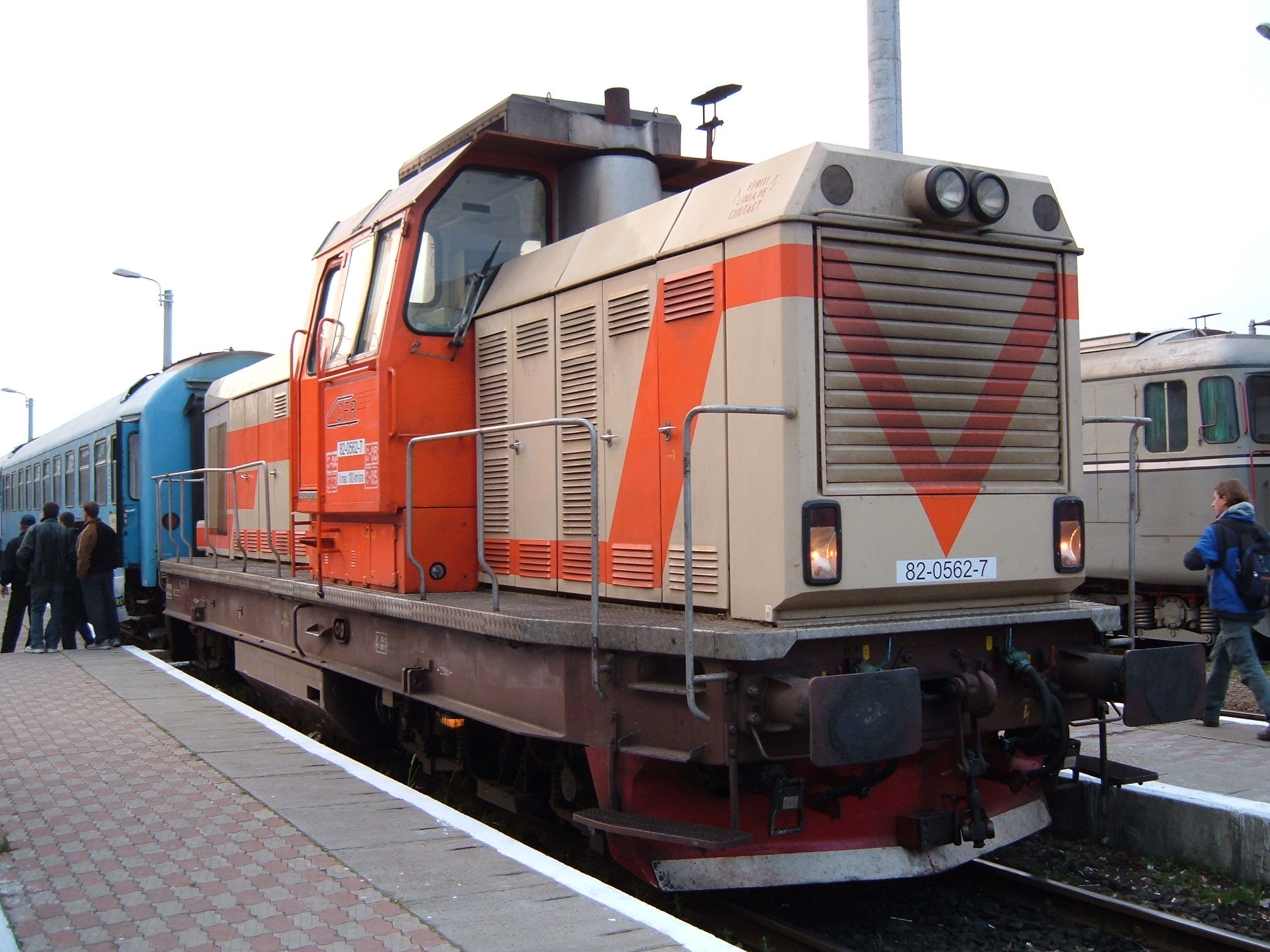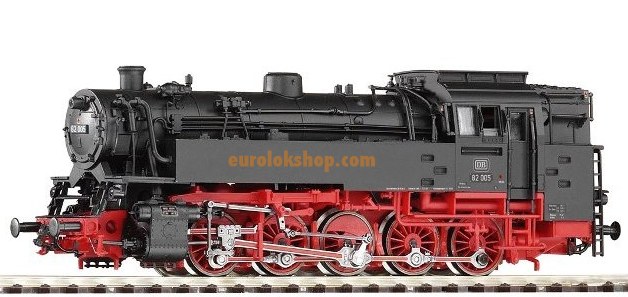DB Class 82
The series 82 of the German Federal Railroad was an intended for shunting and mainline freight tank locomotive. You should replace the five -coupled state railway constructions, but also very susceptible to damage by the complex drive unit locomotives of the DR series 87
History
The Series 82 was produced as the first Neubaulokgattung DB 1950-1951 by the companies Krupp and Henschel and in another building lot in 1955 by Maschinenfabrik Esslingen.
In the design we tried to create an equally well-suited for shunting as mainline service machine. According to the previous state of the art contradicted the relevant services for both design concepts of equivalent suitability for both service areas. This contradiction should be eliminated through a boiler of modern design and the special drive design.
In order to obtain the information necessary for the route service even at higher speeds safe, quiet and track friendly operating characteristics without the extra for a pure shunting locomotive wheel sets, it was decided after preliminary tests with a converted Prussian T 16 to the respective outer Kuppelradsatzpaar to a Beugniot steering rack unite. Previous impeller unprincipled Five coupler tender locomotives with gear set after Gölsdorf such as the T 16 had proved to be something as suitable for higher speeds of around 40 km / h due to the extremely troubled run as little.
With the Beugniot steering racks the machines were at the same time without the laborious drive technology class 87 close able curves, such as are found, for example at the Hamburg port railway with their radii of 100 m, perfect to drive through.
In the design of the boiler was decided to use a welded boiler with large Radiative but without combustion chamber so that it remained stable both in among the erratic performance requirements for shunting duties as well as peak and continuous high performance in line service.
When dimensioning the cylinder, which would have been, however, a large volume must be interpreted in a shunting because of the large forces applied with a small diameter, at a distance locomotive for utilizing the steam expansion, they decided on a compromise. This led, however, as predicted by the design department heads Friedrich Witte, to increased fuel consumption. In shunting the excess consumption fluctuated for T 16 by 10 to 19%, in line service by as much as 30%.
Design features and performance
The locomotives of Class 82 were a welded plate frame made of 25 mm thick heavy plate.
The fully welded combustion chamber loose boiler was made of steel grade St -34, the firebox from IZ II steel. Boiler feed either two steam jet pumps Henschel design or a steam jet pump and a piston feed pump with surface or mixing preheater came for installation.
The two-cylinder steam engine with simple steam expansion was original drive on the third Kuppelradsatz.
When you drive, only the third weakened in the wheel flange and back Kuppelradsatz, so the Treibradsatz, solid was stored in the frame. The two Kuppelradsatzpaare each outboard was associated with Beugniot levers to each a steering rack. The outer axles were a total of 52 mm laterally displaceable, the second and fourth Kuppelradsatz still a total of 36 mm.
The last two examples of the class were also equipped for use on steep grades with Riggenbach counter-pressure brake.
The locomotives of Class 82 overcame a Wagenzugmasse of 800 t in the plane at 70 km / h On slopes of 10 per thousand were still 400 tonnes are transported 40 km / hr.
Use
Busy inserts are mainly due to the marshalling yards at Bremen and Hamm as well as the port railways of Emden and Hamburg. In the 82s could haul service on the steep ramps of the Westerwald (including Kasbachtalbahn ) and are observed in the Black Forest on the Murgtalbahn.
In addition to high oil consumption of the service operation complained to the Series 82 before everything except the problematic hot steam regulators and malfunctioning jet pumps a rapid, caused by pollution, wear of the steering racks.
The phase-out begins in 1966, run- Bw was Koblenz -Mosel, where the last machine of this type was turned off in 1972. The series was formerly so divorced from the service than the 94 series, which should replace yes.
Whereabouts
Almost all locomotives of this series were scrapped after use end, only the 82 008 was adjusted in 1974 as a memorial at the train station Lingen (Ems ) on, she got so in the stock of DB Museum. After several relocations in Lingen, she was transferred in 2003 to Neumünster, where she was cared for by the Rendsburg railway enthusiasts the following years. As part of the resolution of the location of the DB Museum Neumünster was transferred to the locomotive in July 2010 Oberhausen- Osterfeld after victories in the South Westphalian Railway Museum where it is now exhibited.


.jpg/120px-Hugh_llewelyn_82_008_(5888251235).jpg)



.jpg/120px-DB_Class_082_035_(8097800243).jpg)


